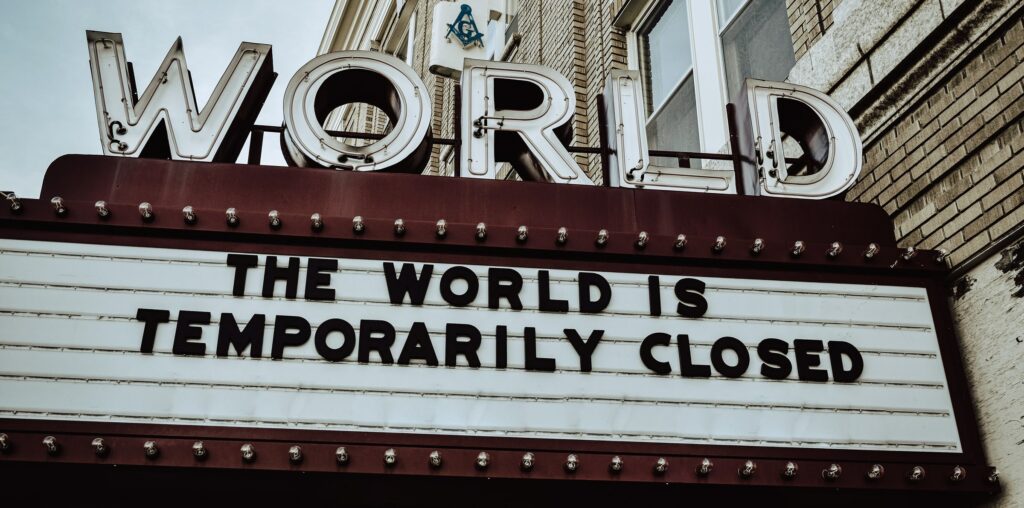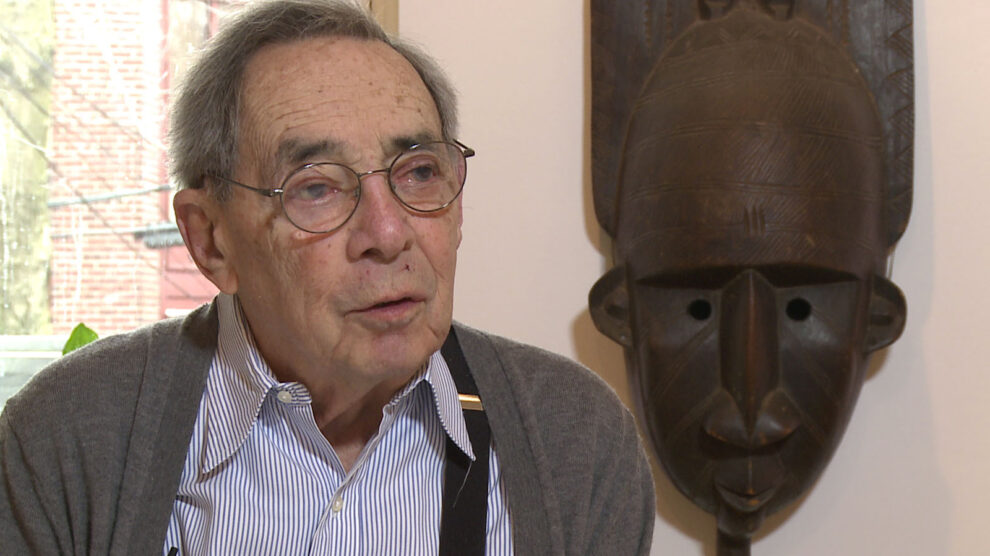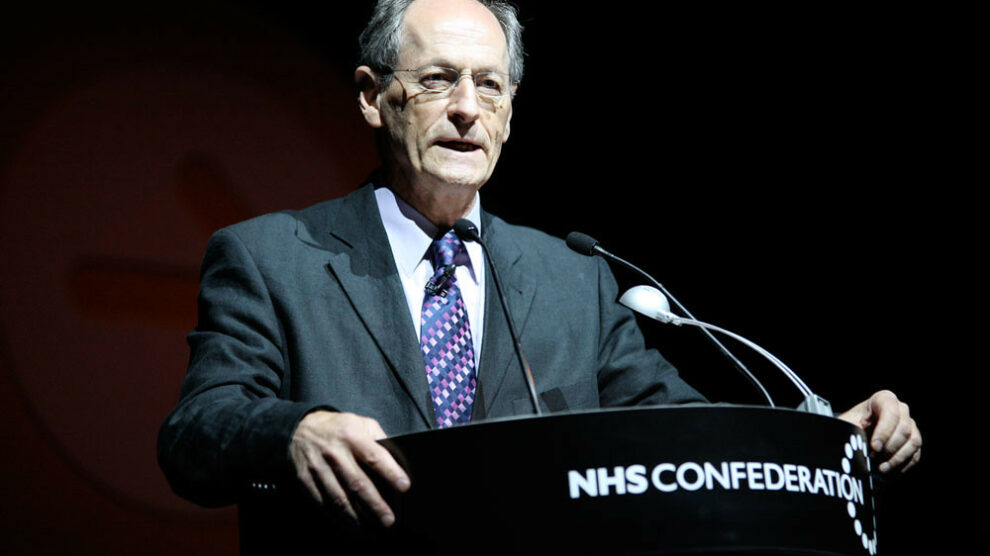August 18, 2021
The Politics of Scientific Consensus
By Timothy LaRock

The scientific response to the COVID-19 pandemic has been comprehensive, from rapid development of vaccines to compilation of large-scale data for forecasting models. Despite these efforts, a consensus among scientists, policymakers, and the general public on how to collectively fight the pandemic and its disparate impacts has failed to emerge in the United States. Many people, especially those with jobs that cannot be done remotely—disproportionately people of color—have become understandably frustrated with, and distrustful of, mitigation tactics they experience as arbitrary and often ineffectual.1 This has been mentally and emotionally taxing and has left many wondering if effective suppression was possible at all. The roots of this frustration lie in large part with the persistent polarized discourse over mitigation strategies spanning government, science, and media commentators.
The debate over what went wrong in the global response will continue for years to come. Indeed, even which factors are most important in suppressing the virus remains contested, since similar policies have resulted in considerably different outcomes depending on location, implementation, and other variables.2 Making matters worse, in some cases it appears that changes in policy were not matched by changes in behavior, making analysis of outcomes even more difficult.3 However, public health experts like Professor Devi Sridhar have noted that early and decisive responses—like those in South Korea, Taiwan, and New Zealand—were able to control the spread of the disease and limit mortality.4 In contrast, places where responses were delayed until outbreaks emerged—like in much of Europe and the US—saw significant death tolls.
There is a short list of policies associated with successful suppression, including mask mandates in public and poorly ventilated spaces, and physical distancing to reduce potential transmission events. Targeted stay-at-home orders with financial and social support for people out of work and school, and regular surveillance testing combined with contact tracing to quickly isolate outbreaks, are also thought to be effective.5 Vulnerable populations and those who care for them must take more strict precautions, especially in crowded settings like hospitals, long-term care facilities, and prisons.
The repeated failure of US scientific and political institutions to implement these policies before it was too late resulted from many factors, including arrogance and incompetence among our leaders and decades of neglected public health infrastructure. It was also due to the immense power of capital to exploit working people and maintain production, consumption, and growth, even while workplace infections drove the pandemic.6 We chose not to pay workers to stay home when it would have been most effective, not because it would have been impossible, but because bosses and politicians feared lost profits and disruption of fragile supply chains. The demands of capital were predictably propped up by far right-wing politicians like former President Donald Trump, who repeatedly downplayed the severity of the pandemic as infections and deaths surged.
The situation appeared to improve somewhat with the inauguration of President Joe Biden in January, who immediately signed a series of Executive Orders relating to the pandemic response.7 However, Biden’s overall strategy has relied heavily on the rapid rollout of vaccinations to suppress infections, stopping short of calling for shutdowns that could have slowed transmission in a much shorter time window while vaccines were simultaneously rolled out.8 Further, some important pieces of the early Biden response—like calling on the Occupational Safety and Health Administration (OSHA) to set out clear guidelines for protecting workers—have been slow to appear.9 Despite the Executive Order calling for deeper OSHA involvement being signed in January, there is still no emergency standard for all workers today, and in early June Secretary of Labor Marty Walsh announced that emergency rules would only apply to workers in healthcare settings, against the demands of unions that the rules should apply to all workers who may be at risk, regardless of industry.10 In many ways the Biden response has appeared to prioritize reopening businesses rather than ending the pandemic.
Well before the 2020 election, early calls to re-open were supported by some prominent scientists and commentators whose skepticism of any mainstream consensus gave decision makers cover to protect the status quo. These commentators have argued that there is no need to keep transmission low among young and healthy people whose individual mortality risk is orders of magnitude lower based on age alone. They identify stay-at-home orders as threats to preventative healthcare, child development, and individual freedom.11 This opposition was solidified in a document called the Great Barrington Declaration (GBD), named for its place of signing, the American Institute for Economic Research (AIER), a right-wing libertarian think tank in Great Barrington, Massachusetts.12
The GBD calls for an alternative strategy dubbed “focused protection” involving the concentration of mitigation measures on elderly and vulnerable populations while letting the rest of the population, especially young people, contract the disease. The logic is that this would lead to herd immunity by rapidly increasing the number of people who are immune in the population without relying on a vaccine that was not guaranteed to materialize. Supporters of the GBD played an outsized role in the discourse, helped in some cases by direct lines to Donald Trump and his advisor Scott Atlas, as well as support from right-wing actors like the AIER and Turning Point USA’s Charlie Kirk.13 Coupled with an approach that emphasizes protecting the economy (while excluding the health of the humans who make it run), these associations call into question the range of solutions proponents are interested in pursuing.
However, this thinking is not limited to the right-wing, nor do the individuals involved universally consider themselves of the right.14 Similar ideas were disseminated through left-wing venues like Jacobin, where mitigation measures were described as “the worst assault on the working class in half a century.”15 This sparked a short-lived debate on the left, in which it was pointed out that focused protection would not protect the working class from infection, since it would empower employers to call vulnerable people back to work to serve the less vulnerable people leaving isolation.16
Despite its popularity with political actors and some scientists, the views of the GBD represent a minority opinion among public health researchers, some of whom have been critical of its ideas in the press.17 Its publication led to a counter petition called the John Snow Memorandum, first published in The Lancet and claiming to represent a consensus view among an international group of researchers in various fields related to pandemic response. The memorandum states explicitly that any “infection-acquired population immunity” approach is flawed, pointing out that uncontrolled spread will inevitably lead to preventable illness and mortality in the population. The memorandum briefly acknowledges the economic and public health implications from mitigation strategies, stating that they must be addressed with social and financial programs, but offers no more specifics.
As Dr. Vinay Prasad has pointed out in Medpage Today, there is reason to be skeptical that these positions serve as two poles of a coherent scientific debate.18 In many cases the discourse around pandemic response policies has felt more like a hopelessly muddled partisan argument characterized by strong emotion and bad faith. The fundamental disagreement is over the assertion in the GBD that the best strategy for reaching herd immunity is “…to allow those who are at minimal risk of death to live their lives normally to build up immunity to the virus through natural infection…” However, as epidemiologists Dr. Abby Cartus and Dr. Justin Feldman pointed out in a Medium post in October 2020, herd immunity through natural infection as a strategy for ending the pandemic “…has been rejected by key scientific leaders in the US, UK, Germany, and World Health Organization.”19 In asserting that natural infection is the best strategy and prescribing that low-risk people should simply “live their lives normally,” the GBD leaves little room for nuanced understanding of the complex interventions necessary for actually protecting the vulnerable. It draws arbitrary boundaries around the use of mitigation tactics, making no mention of the possibility that governments could take further action to mitigate negative higher-order outcomes of more serious interventions, such as loss of pay, the mental health effects of isolation, or reduced access to preventative care.
In fact, the networked nature of social life makes it difficult to imagine actually separating “vulnerable” populations from “not vulnerable” without coming around to the same kinds of interventions proponents of the GBD oppose. For example, the authors suggest that older people living in multi-generational households can use empty hotel rooms as temporary housing. But with hotels open for business and younger people going about their lives, empty rooms that are safe for isolation would presumably be in short supply. On top of this, April reports from Michigan suggest that vulnerability is not such a static category; after many of the Michiganders thought to be most vulnerable were vaccinated and the state began to loosen mitigation efforts, serious cases among younger and healthier people began to increase.20
The GBD and its proponents couch their motivation as a difference of scientific opinion about the least costly way to reach herd immunity.21 However, always lurking behind the scientific disagreements is a contrarian orientation towards “mainstream” scientists and officials. GBD proponents have consistently talked past or over others, rarely acknowledging where there is agreement and suggesting they are the only ones trying to find a middle ground.22 This sort of knee-jerk opposition has aligned well with conservative politicians and pundits who have preferred to do as little as possible, keep the wheels of production turning, and appeal to “individual freedom,” rather than collective good, to guide decision making.23
People with experience as organizers, scientists, or both get used to hearing (and even having) contrarian opinions. Sometimes serious and intransigent skepticism is useful, especially when it serves to protect people who would be harmed or supports evidence-based decisions. Other times, commitment to opposition functions to polarize, muddle, and shut down debate at the exact moment when cooperation is vital, and can lead to ignoring evidence or even embracing pseudoscience. In the latter half of 2020, as we approached the widely-predicted fall and winter surge in cases, the GBD provided a concrete basis for the partisanization of the politics of the pandemic and contributed to the overall failure of the scientific mobilization to form a cooperative front with concrete, consistent, and transparent proposals.
However, the blame for the failure does not lay only with the opposition. The John Snow Memorandum was, as far as can be seen from the website, a one-off signature gathering effort, not an effort to effect change continually. People signed the memorandum and went back to their work with individual disconnected teams. They did not form a collective independent body that could build and disseminate consensus, adapting to changing conditions. In contrast, the AIER has not stopped with online signatures; they continue to publish articles espousing the ideas proposed in the GBD.24
The reality of the scientific response outside of government agencies has been many teams of scientists competing to present predictions and recommendations to policymakers and Tweeting results to sympathetic audiences. This strategy has ultimately had little success in moving decision makers or the public towards a consistent set of policy approaches, even while those decision makers use “listening to scientists” as political cover. There has not been an organized movement to hold policymakers accountable for failures. In fact, people like now-former New York Governor Andrew Cuomo and National Institute of Allergy and Infectious Diseases Director Dr. Anthony Fauci were consistently heralded as heroes by the liberal opinion press over the past year, even while their actions were increasingly recognized to have resulted in significant preventable deaths.25
Some scientists were willing to call for the massive material interventions required to have had any hope of preventing the US death toll reaching hundreds of thousands.26 However, the majority were not. The reluctance of the wider scientific community to join this political stand is an expression of the prevalent ideological commitment that views scientific expertise as separate from its political implications. The result is an approach to policy recommendations that can only partially address a crisis as all-encompassing as the pandemic. When businesses are open but unsafe, or when policy requires them to close, how should workers feed their families without risking their health? Many scientists defer these questions to the assumed expertise of politicians, electing to “stick to the science.” However, avoiding political and economic advocacy means accepting a false separation between scientific evidence and political action. The choice to accept this delineation risks exacerbating the crisis scientists are working tirelessly to address, taking strong evidence-based recommendations and deflating them into ineffective and unpopular half-measures.
The practice and culture of science are also oriented against collective action. Despite participation in professional societies, conferences, and large-scale collaborations, US scientists are largely politically unorganized. Individual scientists may have the ears of journalists or politicians, but are incentivized through the individualistic culture of scientific success to keep the focus on themselves and their contributions, rather than joining in coalition to fight anonymously for the collective good. This has led to a situation where, despite great and commendable efforts at communication by experts, scientific advice is taken or ignored by politicians and decision makers at will, with little potential for political consequences.
Admittedly, there is little evidence that US decision makers would respond to an organized opposition, and plenty of evidence that many are not even interested in listening to the scientists employed by their government agencies. However, an independent group could disseminate a transparent record of recommendations and outcomes, both good and bad. As it stands, people can assume that politicians they prefer are listening to science they can trust, and politicians they dislike are not. Or, maybe more likely, many people have just tuned out the whole thing, sinking instead into skepticism, apathy, and inaction, even in the face of real danger to themselves and their families.
An independent institution made up of scientists creating a mutable consensus that includes addressing the human costs of mitigation efforts could speak for itself, cutting through the polarization and muddled debate that has characterized the response to COVID-19. If we want any chance at fighting this and future pandemics collectively, scientists must organize themselves and refuse to shy away from addressing moral and political issues directly through mass collective action. Those who respond to this call for organization join an ever-growing line of scientists—including those who founded Science for the People in opposition to scientific militarism and imperial war in Vietnam—in standing for a moral vision that points away from the exploitative social relations inherent to capitalism and firmly towards social and political justice for all.
—
Timothy LaRock is a scientist, organizer, and activist located in Boston, MA. He is active in the labor movement and a member of the Boston chapters of Science for the People and the Democratic Socialists of America.
References
- Elise Gould and Heidi Shierholz, “Not Everybody Can Work From Home,” Economic Policy Institute Working Economics Blog, March 19, 2020, https://www.epi.org/blog/black-and-hispanic-workers-are-much-less-likely-to-be-able-to-work-from-home/.
- David Wallace-Wells, “How the West Lost COVID,” Intelligencer, March 15, 2021, https://nymag.com/intelligencer/2021/03/how-the-west-lost-covid-19.html.
- Dereck Thompson, “The Texas Mask Mystery,” The Atlantic, May 21, 2021, https://www.theatlantic.com/ideas/archive/2021/05/texas-mask-mandate-no-effect/618942/.
- Wallace-Wells, “How the West Lost COVID.”
- Justin McCurry, Rebecca Ratcliffe, Helen Davidson, “Mass Testing, Alerts, and Big Fines: The Strategies Used in Asia to Slow Coronavirus”, The Guardian, March 11, 2020, https://www.theguardian.com/world/2020/mar/11/mass-testing-alerts-and-big-fines-the-strategies-used-in-asia-to-slow-coronavirus.
- Justin Feldman, “Coronavirus is an Occupational Disease that Spreads at Work,” Jacobin Magazine, January 19, 2021, https://jacobinmag.com/2021/01/covid-19-business-work-public-health; Marc Norton, “New California Data Shows COVID is Spreading in Workplaces,” Labor Notes, March 26, 2021, https://labornotes.org/blogs/2021/03/new-california-data-shows-covid-spreading-workplaces.
- Will Feuer, “Here Are the 10 Executive Orders Biden Signed to Combat the COVID Pandemic”, CNBC, January 21, 2021, https://www.cnbc.com/2021/01/21/biden-to-sign-10-executive-orders-to-combat-covid-pandemic-invoke-defense-production-act.html; Dave Jamieson, “Biden Bails on COVID-19 Safety Regulation For Most Workers”, Huffington Post, June 10, 2021, https://www.huffpost.com/entry/biden-administration-bails-on-covid-19-safety-regulation-most-workers_n_60c128cde4b017b0c9aeba51.
- Justin Feldman, Abigail Cartus, and Seth J. Prins, “Biden’s Coronavirus Plan Will Not Prevent Death and Devastation,” The Nation, https://www.thenation.com/article/politics/covid-shutdown-biden/.
- Sharon LaFraniere and Sheryl Gay Stolberg, “Biden Pushes Governors to Reinstate Mask Mandates, as the C.D.C. Director Warns of ‘Impending Doom,’” New York Times, March 29, 2021, https://www.nytimes.com/live/2021/03/29/us/biden-news-today/covid-cases-vaccines-eligible.
- Rebecca Rainey, “Biden Administration Will Limit Mandatory COVID Workplace Safety Rules to Health Care Settings”, Politico, June 9, 2021, https://www.politico.com/news/2021/06/09/biden-limits-covid-rules-health-care-492634.
- Andrew Morris, “Stanford University Doctor Leads Global Health Argument Criticizing COVID-19 Restrictions,” ABC News 7 San Francisco, October 12, 2020, https://abc7news.com/coronavirus-lockdown-covid-bay-area-great-barrington-declaration-stanford-doctor-against/6977799/.
- Martin Kulldorff, Sunetra Gupta, and Jay Bhattacharya, “The Great Barrington Declaration,” October 4, 2020, https://gbdeclaration.org/.
- Stephanie M. Lee, “An Elite Group of Scientists Tried to Warn Trump Against Lockdowns in March,” Buzzfeed News, July 24, 2020, https://www.buzzfeednews.com/article/stephaniemlee/ioannidis-trump-white-house-coronavirus-lockdowns; Yasmeen Abutaleb and Josh Dawsey, “New Trump Pandemic Adviser Pushes Controversial ‘Herd Immunity’ Strategy, Worrying Public Health Officials,” The Washington Post, August 31, 2020, https://www.washingtonpost.com/politics/trump-coronavirus-scott-atlas-herd-immunity/2020/08/30/925e68fe-e93b-11ea-970a-64c73a1c2392_story.html; Jessie Hellmann, “Trump Health Official Meets with Doctors Pushing Herd Immunity,” The Hill, October 5, 2020, https://thehill.com/policy/healthcare/519727-trump-health-official-meets-with-doctors-pushing-herd-immunity; Turning Point USA, “Watch This Before You Consider Another Lockdown,” YouTube video, 4:03, December 31, 2020, https://www.youtube.com/watch?v=yW2q_WMa7Rs.
- Sunetra Gupta, “A Contagion of Hatred and Hysteria,” American Institute for Economic Research, November 1, 2020, https://www.aier.org/article/a-contagion-of-hatred-and-hysteria/.
- Nicole Aschoff, “We Need a Radically Different Approach to the Pandemic and Our Economy: An Interview with Martin Kuldorff and Katherine Yih,” Jacobin Magazine, September 19, 2020, https://www.jacobinmag.com/2020/09/covid-19-pandemic-economy-us-response-inequality.
- Michael Friedman, “Yih and Kulldorff’s Radical Covid Strategy,” Spectre Journal, September 24, 2020, https://spectrejournal.com/yih-and-kulldorffs-radical-covid-strategy/.
- Stephanie M. Lee, “Scientists Are Slamming The Great Barrington Declaration’s Call for ‘Herd Immunity’,” Buzzfeed News, October 15, 2020, https://www.buzzfeednews.com/article/stephaniemlee/herd-immunity-great-barrington-backlash-letter.
- Vinay Prasad. “Op-Ed: Great Barrington vs John Snow is a False Choice,” MedPage Today, October 16, 2020, https://www.medpagetoday.com/blogs/vinay-prasad/89177.
- Abby Cartus and Justin Feldman, “The ‘Herd Immunity Strategy’ Isn’t Part of a Scientific Debate Over COVID-19. It’s A Well-funded Political Campaign,” Justin Feldman on Medium, October 11, 2020, https://medium.com/@jmfeldman/the-herd-immunity-strategy-isnt-part-of-a-scientific-debate-about-covid-19-abddf6bc7c13.
- Mitch Smith and Sarah Mervosh, “Michigan’s Covid Wards Are Filling Up With Younger Patients,” The Washington Post, April 25, 2021, https://www.nytimes.com/2021/04/25/us/michigan-covid-younger-people-hospitalized.html.
- Günter Kampf and Martin Kulldorff, “Calling for Benefit-risk Evaluations of COVID-19 Control Measures,” The Lancet, February 4, 2021, https://www.thelancet.com/journals/lancet/article/PIIS0140-6736(21)00193-8/fulltext; Tunku Varadarajan, “Britain’s ‘Professor Reopen,’” The Wall Street Journal, June 5, 2020, https://www.wsj.com/articles/britains-professor-reopen-11591376796.
- Sunetra Gupta on Talk Radio Breakfast Show, accessed via Twitter, https://twitter.com/talkRADIO/status/1330795916102672385.
- Life, Liberty, and Levin, “Dr. John Ioannidis on the Race for Real Data on the Coronavirus Pandemic,” April 20th, 2020, https://video.foxnews.com/v/6150670357001#sp=show-clips; Søren Hough, “COVID-19 is No Blessing in Disguise,” The Commoner, November 15, 2020, https://www.thecommoner.org.uk/covid-19-is-no-blessing-in-disguise/.
- Ethan Yang. “Study Highlights Blinding Moral Bias Against Questioning Lockdowns,” American Institute for Economic Research, January 2, 2021, https://www.aier.org/article/study-highlights-blinding-moral-bias-against-questioning-lockdowns/; Paul E. Alexander, “14 Months Later: A Pathway Forward,” American Institute for Economic Research, April 23, 2021, https://www.aier.org/article/14-months-later-a-pathway-forward/.
- Meryl Kornfield, “Cuomo Stops Short of Apology Over Delay in Data for Nursing Home Coronavirus Deaths,” The Washington Post, February 15, 2021, https://www.washingtonpost.com/nation/2021/02/15/cuomo-nursing-home-deaths/; Sam Adler-Bell, “Doctor Do-Little: The Case Against Anthony Fauci,” The Drift, January 24, 2021, https://www.thedriftmag.com/the-case-against-fauci/.
- Gregg Gonsalves and Amy Kapczynski, “Markets vs. Lives,” Boston Review, March 17, 2020, https://bostonreview.net/science-nature/gregg-gonsalves-amy-kapczynski-markets-v-lives; Dr. Theresa Chapple on Twitter, quoting Justin Feldman on Twitter: https://twitter.com/Theresa_Chapple/status/1350461784176668672; Dr. Ellie Murray on Twitter: https://twitter.com/EpiEllie/status/1295056806386049024.





